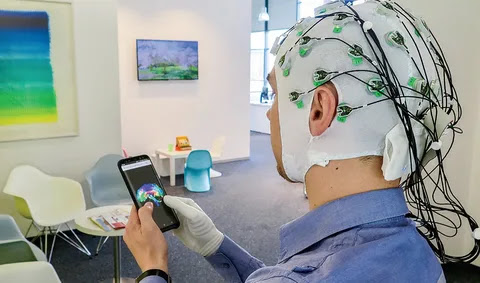The Global Neuroprosthetics Market is experiencing trends due to rising prevalence of neurological disorders
 |
| Neuroprosthetics Market |
The
Global Neuroprosthetics Market is a rapidly growing industry. Neuroprosthetics,
also known as neuronal prosthetics, are artificial devices that are implanted
or connected to the central or peripheral nervous system to replace a missing
or impaired sensory or motor function. Neuroprosthetics can be either
signal-reading devices that record and transmit biological information, or
stimulating devices that deliver electrical or chemical stimulation to produce
sensory experiences or initiate movements. Key products in this market include
deep brain stimulation devices, cochlear implants, retinal implants, spinal
cord stimulators, and others.
The Global
Neuroprosthetics Market Share is estimated to be valued at US$ 12.66 BN
in 2024 and is expected to exhibit a CAGR of 10.9% over the forecast period
2024 to 2031. Neuroprosthetics have helped improve the lives of millions of
people suffering from neurological disorders by restoring or enhancing sensory
and motor functions. Factors such as the rising prevalence of neurological
diseases such as Parkinson's disease, epilepsy, depression, and hearing and
vision impairments are driving more patients to opt for neuroprosthetic
treatments.
Key Takeaways
Key players operating in the Global Neuroprosthetics Market are Second Sight,
Med-El, Retina Implant, Sonova Holding AG. , NeuroPace, Inc., Nevro, Medtronic
plc, Abbott, Cochlear, Boston Scientific Corporation, Livanova, Demant A/S,
Cyberonics Inc. and NDI Medical LLC. Second Sight, Medtronic and Cochlear are
market leaders in retinal implants, deep brain stimulation, and cochlear
implants, respectively.
The demand for neuroprosthetic devices is growing rapidly due to the rising
number of patients with neurological disorders. According to WHO estimates,
over 1 billion people worldwide currently suffer from neurological disorders in
some form. Neuroprosthetic implants have the potential to treat conditions
affecting millions.
Neuroprosthetic companies are also expanding globally to address the unmet
needs in developing countries. For example, Cochlear has partnered with
governments in China, India, and several Latin American and African countries
to facilitate cochlear implants for hearing loss patients. This is expected to
significantly boost the industry's growth prospects over the coming decade.
Market key trends
Direct brain-machine interfaces are emerging as a key trend in the Global
Neuroprosthetics Market. These interfaces involve direct connections between
engineered devices and the brain using electrodes, spurring new hope for
treating paralyzing neurological conditions. Companies like Neuralink are
developing ultrafine flexible electrode “threads” that can access individual
neurons through minimally invasive surgery. This could enable paralyzed limbs
to be controlled directly through thought, restore vision or even enhance human
intelligence.
Porter’s Analysis
Threat of new entrants: Entry barriers like R&D costs and regulatory
approvals are high in this market. Bargaining power of buyers: Individual
buyers have low bargaining power due to undifferentiated nature of products but
group purchasers have moderate power. Bargaining power of suppliers: Suppliers
of raw materials have moderate bargaining power due to specialist components
and expertise required. Threat of new substitutes: Threat is moderate as new
materials and technologies emerge continuously. Competitive rivalry:
Competition is high among the key players to gain higher market share through
product innovations and expanded geographical presence.
Geographical Regions
North America holds the major share of the global neuroprosthetics market,
particularly the United States. The region contributes to over 40% of the total
market value owing to supporting regulatory environment, higher adoption and
awareness levels. Developed European markets like Germany, France and United
Kingdom collectively make up the second largest regional market. Asia Pacific
region exhibits fastest growth led by untapped opportunities in large economies
like China and India combined with improving affordability and access to care.
The Asia Pacific region is expected to witness the fastest growth over the
forecast period in the global neuroprosthetics market due to rapidly increasing
patient pool, rising medical tourism, and improving healthcare expenditure in
countries such as India, China and other developing Asian countries.



Comments
Post a Comment